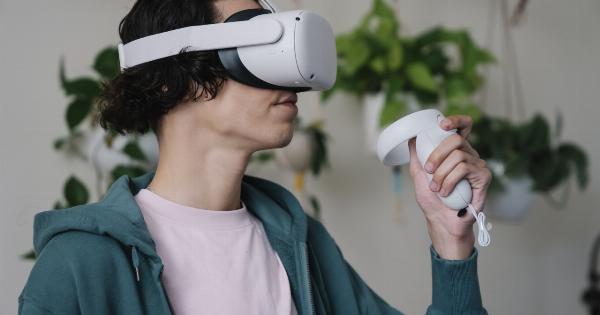Colors surround us in every aspect of our lives. From the vibrant hues of a sunset to the subtle shades of a flower petal, our visual perception allows us to experience the world in all its colorful glory.
However, have you ever wondered just how accurate your perception of colors truly is?.
While we may all agree on the basic colors like red, blue, and yellow, individual variances in color perception are more common than you might think.
Our eyes and brains work together to interpret the wavelengths of light that hit our retinas, but subtle differences in our physiology and environment can affect how we see and interpret colors.
The Science Behind Color Perception
To understand the accuracy of our color perception, we need to delve into the science behind it. The human eye contains specialized cells called cones that are responsible for detecting different wavelengths of light.
We have three types of cones that primarily respond to red, green, and blue light respectively. When light enters our eyes, it is absorbed by these cones, which then send signals to the brain for interpretation.
However, our perception of colors is not solely influenced by our cones. Factors such as lighting conditions, background colors, and even our emotional state can all impact how we perceive a particular color.
Additionally, variations in our genes can affect the function and sensitivity of our cones, leading to differences in color perception between individuals.
The Color Perception Spectrum
Color perception exists on a spectrum, ranging from individuals who are colorblind to those with heightened sensitivity to certain colors. Let’s explore the different aspects of color perception:.
1. Color Blindness
Color blindness, or color vision deficiency, is the most well-known type of color perception anomaly. It affects approximately 8% of males and 0.5% of females of Northern European descent.
Color blindness can be inherited or caused by certain medical conditions or medications. People with color blindness may have difficulty distinguishing between certain colors, especially shades of red and green or blue and yellow.
2. Tetrachromacy
On the opposite end of the spectrum, some individuals possess an extra type of cone in their eyes, allowing them to perceive a broader range of colors. Known as tetrachromats, these individuals can see colors that are invisible to most people.
While rare, tetrachromacy highlights the vast differences in color perception that can exist between individuals.
3. Color Constancy
Color constancy is our ability to perceive the color of an object consistently, regardless of changes in lighting conditions. For example, a red apple will still appear red to us whether we see it in bright sunlight or under artificial indoor lighting.
Our brain adjusts our perception of color based on contextual factors to ensure consistency and help us navigate the world around us.
4. Individual Variations
Even among individuals with “normal” color perception, there are variations in how we see and perceive colors. These variations can be influenced by factors like age, gender, cultural backgrounds, and personal experiences.
For instance, studies have shown that women tend to have a slight advantage in perceiving subtle variations in color compared to men.
Testing Your Color Perception
If you’re curious about your own color perception abilities, various online tests and optical illusions can provide some insights.
One common test used is the Ishihara color test, which uses a series of plates with dots of different colors and patterns. People with color vision deficiencies may have difficulty identifying the numbers hidden within the dot patterns.
Another test known as the Farnsworth-Munsell 100 Hue Test assesses your ability to identify and arrange color samples in order of hue.
This test is often used to identify color discrimination deficiencies and is widely used in industries where accurate color perception is essential, such as graphic design and manufacturing.
The Impact of Color Perception
Color perception goes beyond mere aesthetics and has a significant impact on our daily lives.
For example, in the field of design and marketing, colors are strategically used to evoke emotions, influence purchasing decisions, and create memorable brand identities. Understanding how colors are perceived allows designers to effectively communicate their intended messages.
Color perception also plays a crucial role in various professions. Doctors and nurses rely on color perception to interpret lab results and diagnose certain conditions.
Pilots must accurately differentiate between different colored runway lights and indicators. Even photographers and artists rely on their perception of colors to capture and present their work.
Improving Color Perception
While some factors that affect color perception, such as genetics, cannot be changed, there are ways to improve our overall color perception skills:.
1. Practice
Engaging in activities that require careful observation of colors, such as painting or photography, can help train our eyes and brain to perceive subtle differences in hues and shades.
2. Color Training Tools
Various color training tools, such as color matching games and online color perception tests, can be found to help improve color discrimination skills.
3. Controlled Lighting
When assessing or working with colors, it’s crucial to have consistent and controlled lighting conditions. Natural daylight is known to provide the most accurate representation of colors, while fluorescent lights can affect color perception.
Conclusion
Our perception of colors is a fascinating and intricate process influenced by a multitude of factors. From color blindness to tetrachromacy, individual variations to color constancy, our ability to perceive and interpret colors varies widely.
Understanding these differences can help us appreciate the uniqueness of our perceptions and apply this knowledge in various aspects of our lives.



























